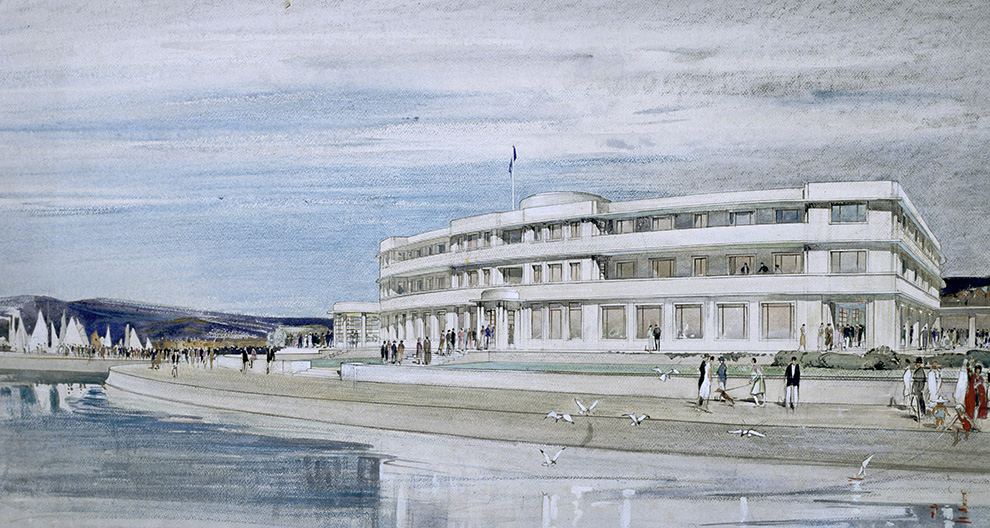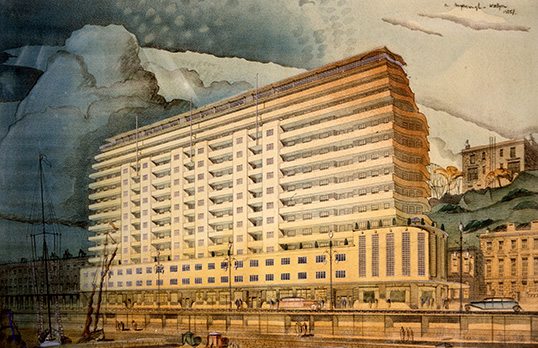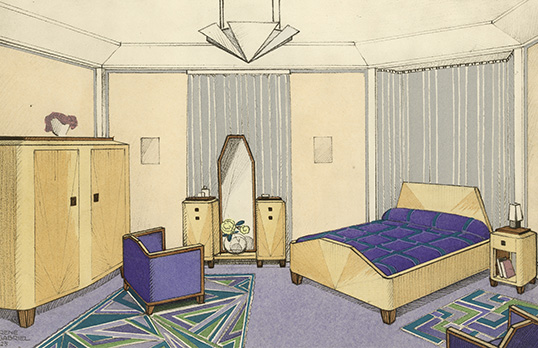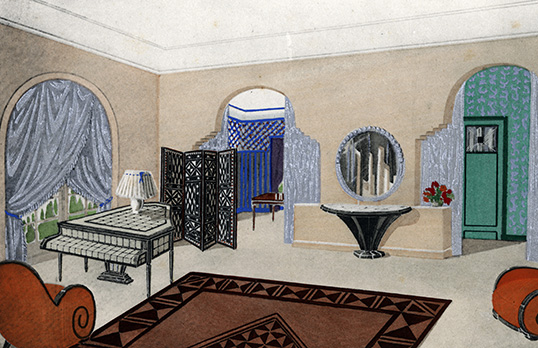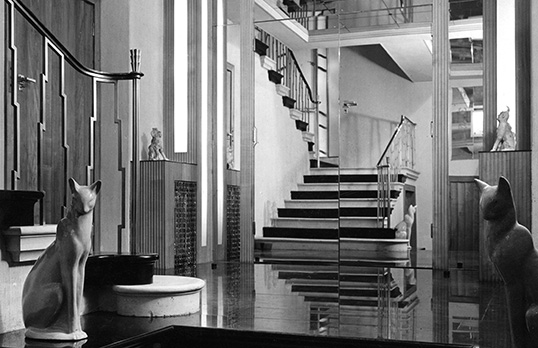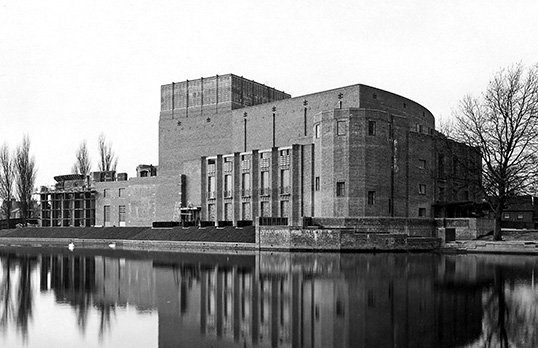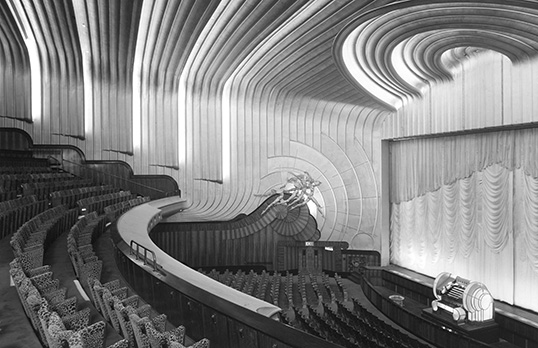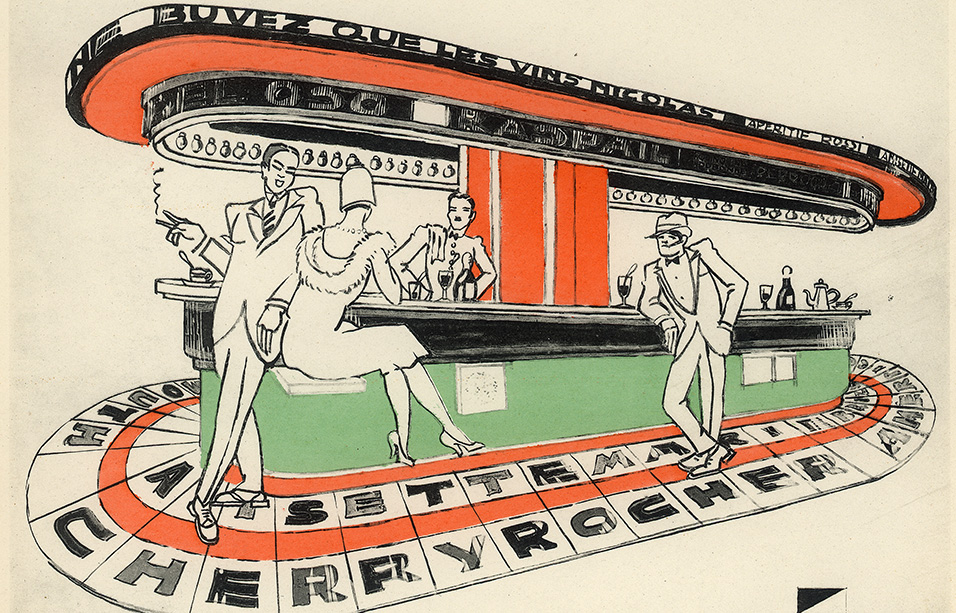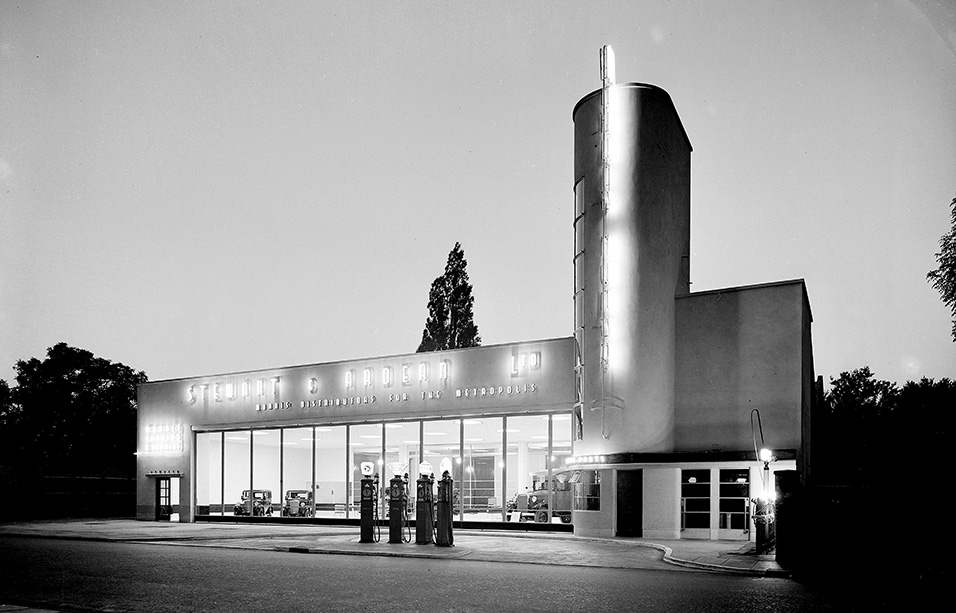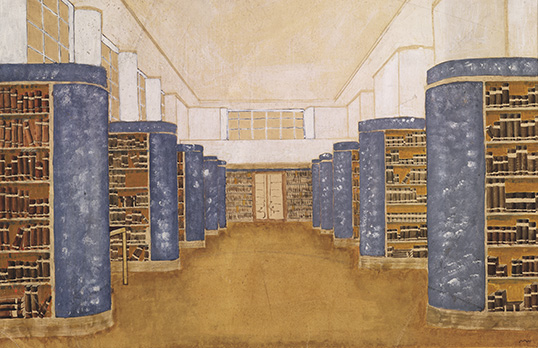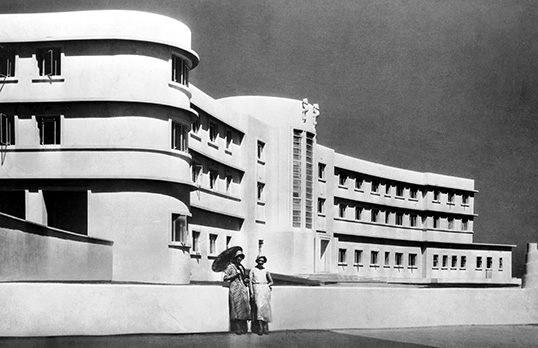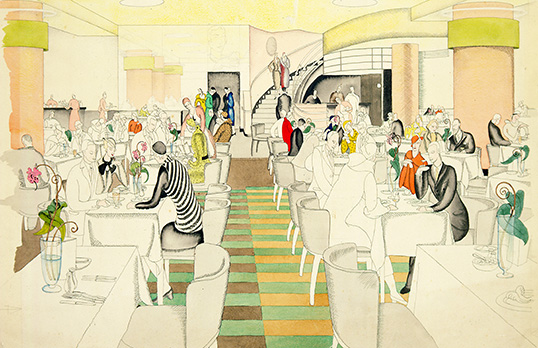A decorative style of bold geometric shapes and bright colours, it encompassed furniture, textiles, ceramics, sculpture and architecture. The term ‘Arts Decoratifs’ (later shortened to Art Deco in the 1960s) was coined after the Exposition Internationale des Arts Decoratifs et Industriel Modernes (International Exhibition of Modern and Industrial Decorative Arts) held in Paris in 1925.
The style spread across Europe to the United States and Britain, where it became a favourite for building types associated with the modern age, garages, airports, ocean liners, cinemas, swimming pools, office buildings, department stores, power stations and factories. There were overlaps with Modernism, with the use of clean lines and minimal decoration, but the style also lent itself well to buildings associated with entertainment, providing glamorous interiors for hotels, restaurants and luxury apartments. Lighting and mirrors were often used, with neon strip lighting to emphasise the streamlined nature of the designs and mirrors to enhance and reflect.

